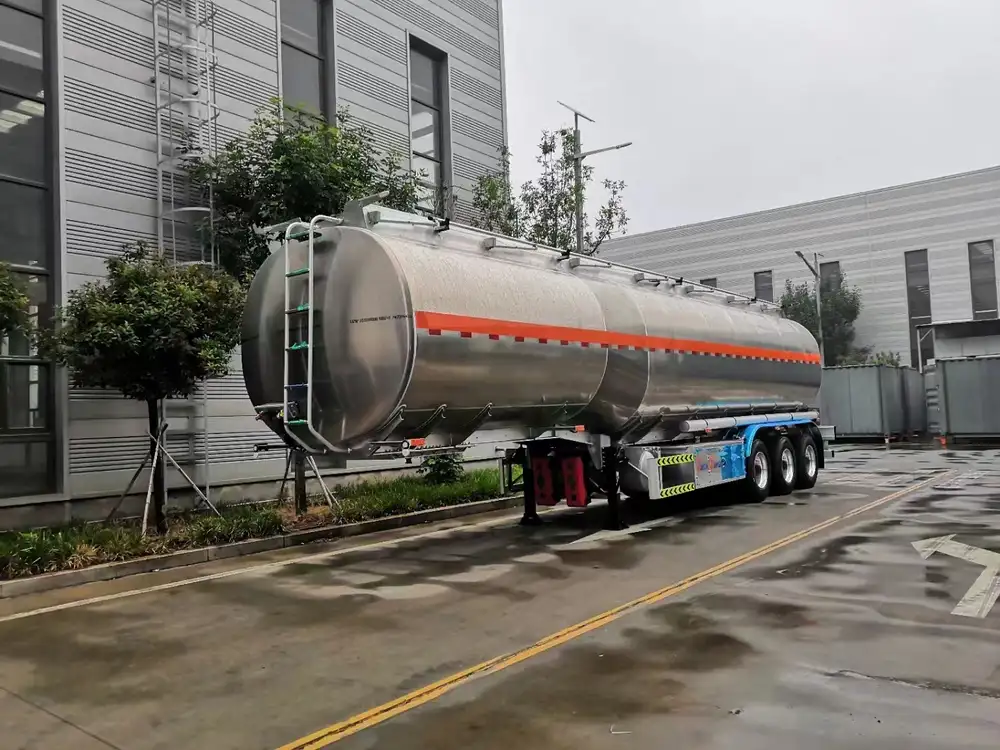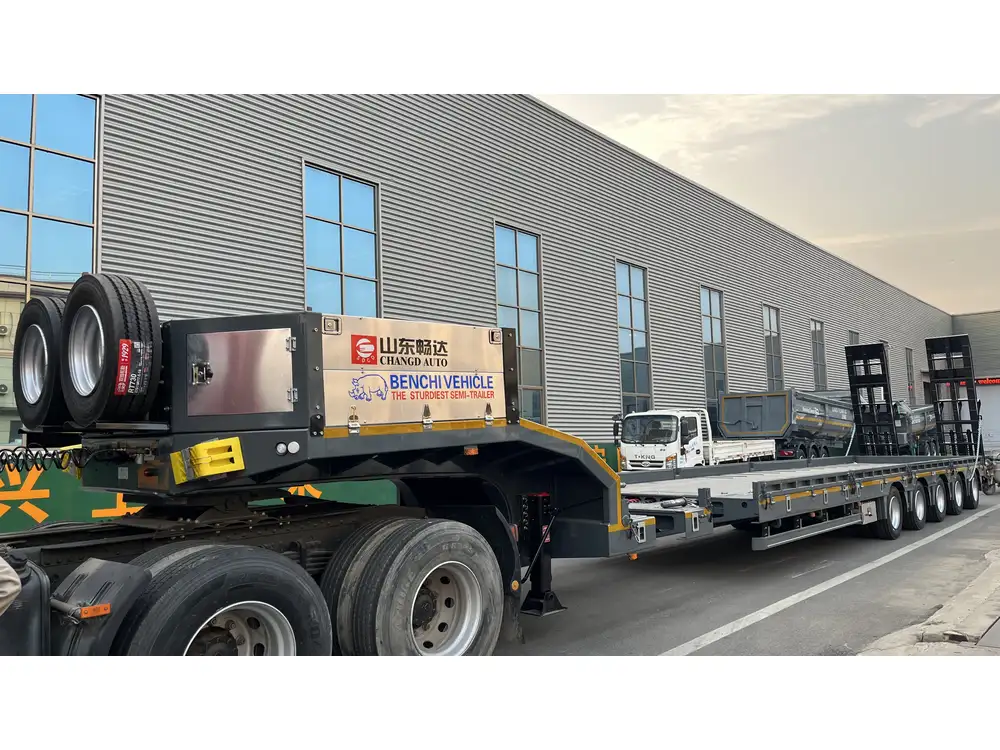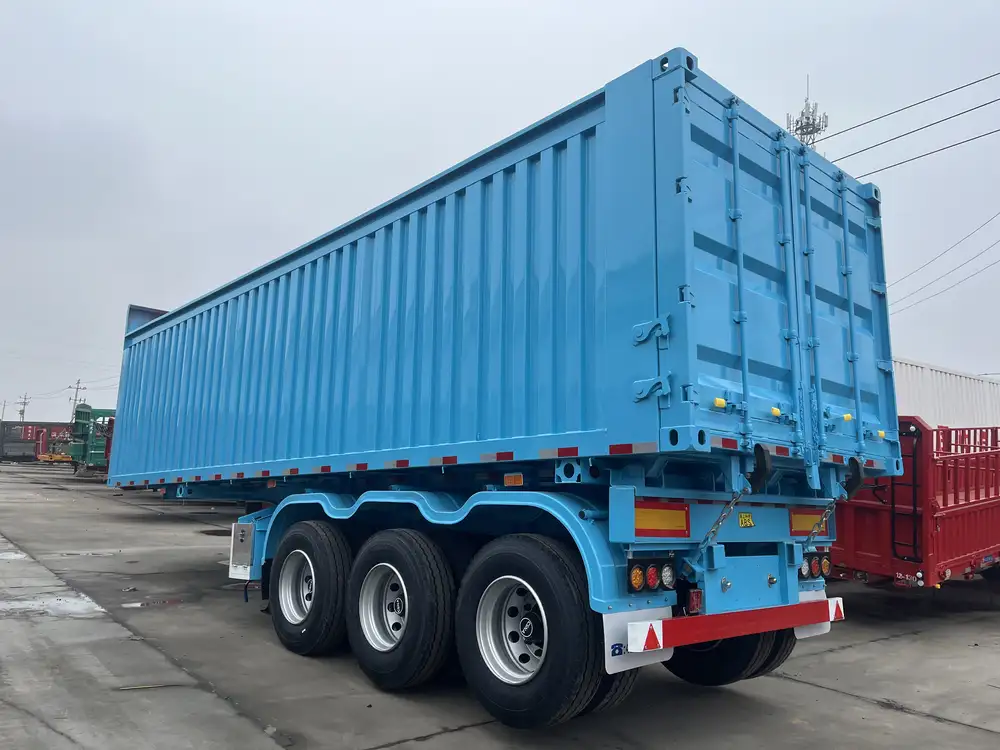Overview of Semi-Tractor Trailers
When it comes to logistics and transportation, the semi-trailer is a powerhouse. These colossal vehicles are designed to transport goods efficiently across long distances, making them a critical component of the supply chain. Within the vast world of semi-trailers, one pivotal question arises frequently among logistics managers, truck enthusiasts, and regulatory bodies alike: What is the width of a semi-truck trailer? Understanding the dimensional specifics of semi-truck trailers is essential for compliance, safety, and efficiency in the transportation industry.
Dimensions Beyond Width: A Quick Overview
To provide context, let’s take a moment to examine the full range of dimensions typically associated with semi-trailers. Understanding the various measurements, including length, height, and weight, is vital for comprehensive knowledge in this area.
| Measurement | Standard Dimensions |
|---|---|
| Width | 8.5 feet (102 inches) |
| Length | 48 to 53 feet (varies by type) |
| Height | Up to 13.5 feet (usually regulated) |
| Weight Limit | Generally 80,000 pounds (including load) |

Semi-Tractor Trailer Width: A Detailed Analysis
Legal Limits and Standards
The legal width of a semi-trailer in the United States is defined by federal regulations, which stipulate that the maximum width should not exceed 8.5 feet (102 inches). This standard applies across most highways but may vary depending on the state’s specific regulations or local laws. Over-width loads may require special permits, which can significantly impact transport schedules and costs.
Variations in Width: What to Expect
While the standard width is set at 8.5 feet, there are exceptions. Certain specialized trailers, designed for specific cargo types, may have extended widths. These can include:
- Flatbed Trailers: Often used for oversized cargo, their width can sometimes reach up to 10 feet (120 inches) or more with the proper permits.
- Beam Trailers: Designed for heavy loads, these can also exceed standard widths depending on cargo needs.

International Width Standards
It’s worth noting that width regulations can vary significantly globally. For instance:
- European Union: The maximum width for trucks is generally 2.55 meters (approximately 8.37 feet).
- Australia: The standard width can reach up to 2.5 meters (about 8.2 feet).
Understanding these global dimensions can aid logistics companies engaged in international shipping and transport.
Effects of Width on Transportation
Safety Considerations
The width of semi-trailers directly impacts safety on the road. An overly wide trailer not only endangers the vehicle’s stability but also presents challenges in navigation, especially in narrow lanes or during turns. Generally, wider loads require additional safety measures, such as:
- Escort Vehicles: For loads exceeding the standard width, escort vehicles are vital to alert other road users about potential hazards.
- Signage and Lights: Proper signaling equipment ensures that other drivers are aware of the oversized dimensions.

Fuel Efficiency
Interestingly, the width of a trailer can also affect fuel efficiency. Wider trailers may experience increased drag, leading to higher fuel consumption. Fleet operators often consider this factor when planning routes and scheduling deliveries, as fuel costs can comprise a significant portion of total operational expenses.
Factors Influencing the Choice of Semi-Trailer Dimensions
Type of Cargo
The nature of the cargo being transported can significantly influence the choice of semi-trailer dimensions. Some considerations include:
- Weight Distribution: Heavier loads may necessitate specific types of trailers with reinforced structures and potentially wider designs for better weight management.
- Type of Load: Unique cargo such as machinery, vehicles, or agricultural products may require special trailers that do not conform to standard dimensions.

Regulatory Compliance
State and federal regulations dictate specific requirements about trailer dimensions to promote safety and efficiency. Companies must ensure that they are compliant to avoid legal penalties and ensure smooth transportation processes.
The Role of Technology in Measuring Dimensions
Modern Measuring Tools
Advancements in technology have transformed how dimensions are measured and monitored. Today, various tools provide accurate measurements, such as:
- Laser Measurement Systems: These allow for precise and non-invasive dimension checking.
- Load Cells and Sensors: These high-tech solutions help monitor weight distribution, ensuring compliance with legal limits.

Telemetry and Data Analytics
Furthermore, the integration of telemetry systems enables fleet managers to track the dimensions and weight of trailers in real-time. This data can provide valuable insights for optimizing transportation strategies and improving safety protocols.
Challenges Faced in Width Measurement
Varied Load Types
One of the primary challenges faced by manufacturers and transport companies lies in the varying load types. Achieving the appropriate balance between load width and regulatory stipulations requires diligent planning and execution. Here are a few common challenges:
- Dynamic Regulations: As transport needs evolve, so too do regulatory frameworks. Stay updated to avoid potential violations.
- Interstate Variations: Rules can differ from one state to another, complicating transport logistics across state lines.

Best Practices for Managing Trailer Dimensions
Regular Inspections
Conducting regular inspections plays a critical role in ensuring compliance and safety. Companies should implement:
- Frequent Dimension Checks: Routinely verify the dimensions of trailers to ensure they remain within permissible limits.
- Wear and Tear Assessments: Regular check-ups help identify any structural failings that could compromise safety or compliance.
Employee Training
Investing in employees through training programs related to dimensions can yield substantial benefits. Topics may range from safety protocols during loading and unloading to understanding the importance of maintaining standard dimensions.

Conclusion: The Significance of Understanding Semi-Tractor Trailer Width
In the final analysis, the width of a semi-trailer is not merely a statistic; it embodies a complex interplay of safety, regulatory compliance, and operational efficiency. With strict legal limits set primarily at 8.5 feet in the United States, attention to detail in dimensions is critical for maximizing the benefits of these irreplaceable transport vehicles. By embracing technology, fostering awareness, and implementing best practices, logistics companies can not only stay compliant but also contribute significantly to a safer and more efficient transportation landscape.
Transport professionals and enthusiasts alike must continue to engage in this ongoing conversation, ensuring that as the industry evolves, so too does our understanding of the pivotal role dimensions play in the functionality of semi-truck trailers. Embrace the dialogue, educate teams, and compel innovation—because, ultimately, the road ahead is paved with informed decisions.



